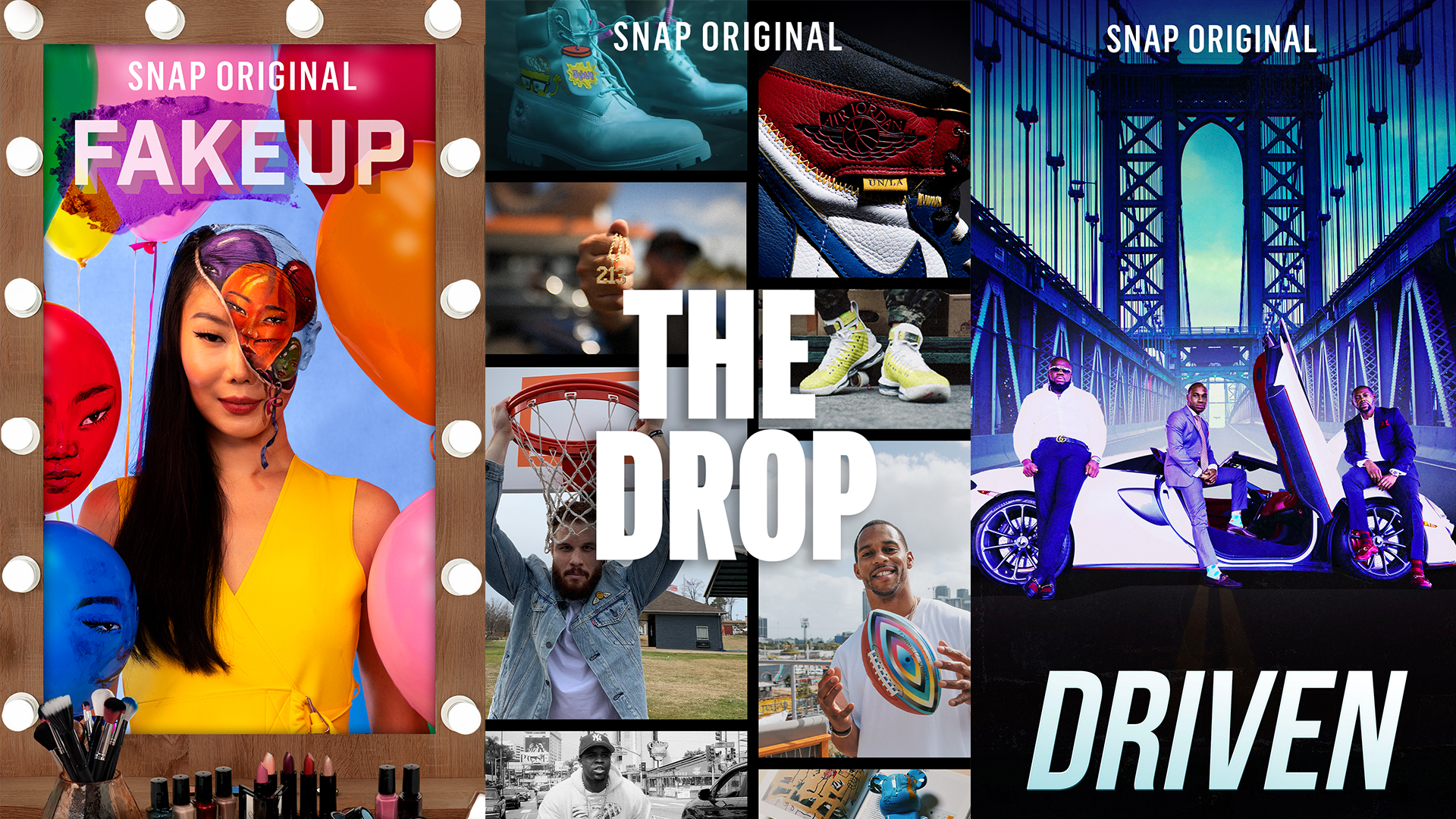Snap, Verizon Collaborate on Show Featuring AR
Snapchat cites adding 23% incremental reach to TV ad campaigns

In its initial NewFront presentation, Snap showed off a collaboration with Verizon that features augmented reality within the show for the first time.
The show, Fake Up, features optical illusion makeup artists who transform their own face into works of art. Viewers can use AR to try on custom lenses that bring the show’s illusions to life and try it out on their own face.
The lenses are sponsored by Verizon and a special 5G experience will be available to Verizon customers.
Advertisers like Verizon are turning to Snapchat to reach its 100 million people in the U.S., including 90% of 13- to 24-year-olds.
Shapchat points to a new Nielsen analysis of more than 20 ad campaigns that found that Snapchat added 23% incremental reach to TV campaigns among the advertisers’ demographic target.
Snap also announced a new Snap original, The Drop (N TWRK), a shoppable show featuring exclusive street wear from celebrities and top designers. The unscripted series premieres later this year with new episodes appearing weekly.
Another Snap original, Driven, will return for a second season. The series, about young entrepreneurs who deliver custom cars to celebrities and high rollers, had more than 15 million Snapchatters watching during season one.
The smarter way to stay on top of broadcasting and cable industry. Sign up below
Snapchat has been evolving its advertising offering. A year ago, it launched Snap Select, which offers six-second spots that can’t be skipped within its most popular content at a fixed CPM (cost per thousand viewers). In November, it added Extended Play Commercials that can run up to three minutes.
In April, Snap launched First Commercial, which lets an advertiser make its message the first thing a user sees when they decide to watch a Snap show.
The ad offering is expected to evolve under Peter Naylor, the former Hulu sales head who joined Snap as VP of sales for the Americas in April.
Snapchat will point to campaigns that show its ads work. For example, Bud Light’s Snap Select campaign delivered 46% incremental reach against light TV viewers. Snap was nine times more efficient at building reach than TV, according to Nielsen.
In another campaign, Doritos garnered incremental reach of 168% among light TV viewers 18-49.
Jon has been business editor of Broadcasting+Cable since 2010. He focuses on revenue-generating activities, including advertising and distribution, as well as executive intrigue and merger and acquisition activity. Just about any story is fair game, if a dollar sign can make its way into the article. Before B+C, Jon covered the industry for TVWeek, Cable World, Electronic Media, Advertising Age and The New York Post. A native New Yorker, Jon is hiding in plain sight in the suburbs of Chicago.

